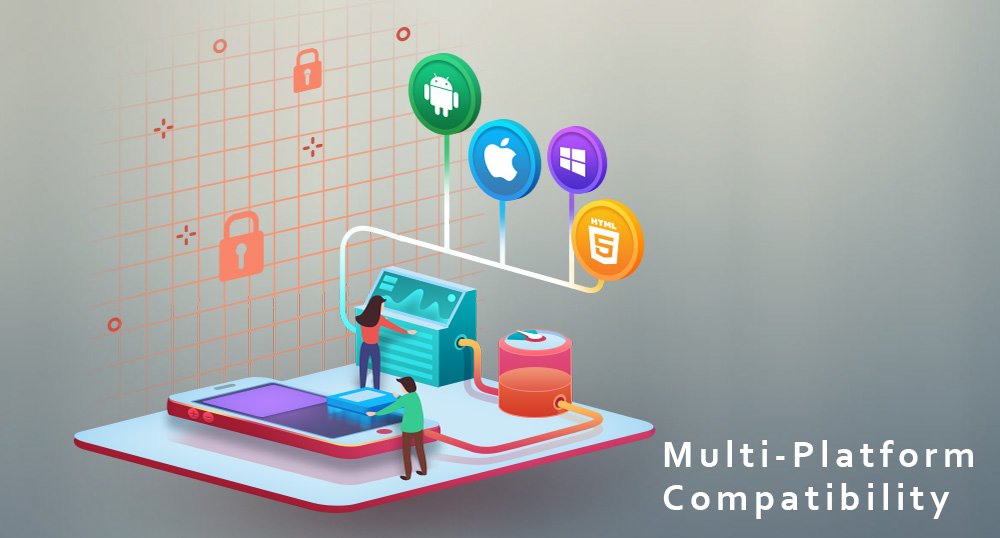If we survey the modern device market, we will see that it could be more cluttered due to the various segments of currently available devices. As a minor point of reference, modern users can use desktops, smartphones, tablets, and even IoTs to access the Internet. A remote test lab is crucial for efficient app testing in such a market.
This is because the testers can streamline the entire cross-platform development process using remote test labs to access a wide range of different device configurations for comprehensive testing. The Safari browser is essential to cross-platform testing as it has a global user base.
This article will explain the importance of Safari testing, the challenges involved in this process, and how modern testers can use remote test labs to optimize the entire cross-platform compatibility testing process.
The Importance of Safari Testing
Safari testing is an integral part of the modern application development and testing life cycle because it has a huge market share. Safari is the default browser on all iOS and Mac OS devices. Therefore, it is important for web testers to ensure that the app functions seamlessly on Safari.
Using this approach, the app developing companies can provide a satisfactory user experience to all their customers. However, achieving this level of compatibility involves testing across various Safari versions on different Apple devices and multiple operating system versions. Therefore, the app developing companies must set up and maintain a comprehensive testing lab to maintain all these parameters.
Challenges in Safari Testing
To ensure a smooth Safari testing process, the application testers must be aware of all the challenges that they will encounter during this process. To simplify this knowledge for the new testers, we have mentioned some of the most important challenges in this list:
- Device Fragmentation
The present Apple ecosystem comprises multiple devices. Each of these devices has different resolutions, screen sizes, and performance capabilities. So, manually testing the app’s performance across all these devices can be time-consuming and impractical for app testers.
- OS Version Compatibility
The behavior of Safari browser versions can be different across various iOS and Mac OS versions. So, the testers must execute the test cases across a wide range of operating system versions to ensure consistent performance. If the app testers fail to implement this process, it can cause unstable app performance or complete crashes in a worst-case scenario.
- Limited Access
Apple is notorious for restricting access to various backend processes. Therefore, not all testers will have access to every Apple device and operating system combination to execute the test cases. Due to this limitation, it is quite easy for the testers to overlook potential compatibility issues that might be present within the app infrastructure.
Using a Remote Test Lab
While using remote test labs, the app testers can access multiple solutions for the challenges of Safari testing. This is because these labs provide virtual access to a comprehensive range of Apple devices and operating system combinations. Let us briefly understand how remote testing labs contribute to cross-platform compatibility testing optimization:
- Access to Diverse Devices
While using remote test labs, app developers can have access to a wide range of Apple devices. Some of the most important names in this list include iPads, iPhones, MacBooks, and iMacs. This access ensures thorough testing across different resolutions, screen sizes, and hardware specifications.
- Comprehensive OS Coverage
Remote testing labs have a wide range of iOS and Mac OS versions. These inclusions allow testers to test their apps on various Safari versions. The ultimate goal of this process is to identify compatibility issues that are specific to different operating system combinations.
Moreover, with remote test labs, the app testers can access certain operating system versions that are extinct. This is a significant factor as various market studies show that more than 75% of the end-user base does not update their operating systems.
- Cost Effectiveness
Investing thousands of dollars in physical devices for testing can be an expensive process. Moreover, this investment might not cover the entire range of configurations that are currently available in the market. Therefore, using remote testing labs, the app testers can access a cost-effective alternative that offers access to a diverse set of devices.
Additionally, it also eliminates the need for ownership or maintenance of a physical device testing lab. The developers can also get rid of the hassle and headache of manually updating all the devices and browser versions that will be present in a physical device testing lab.
- Efficiency and Scalability
While using remote device testing labs, the app testers can conduct thorough testing efficiently. They can also eliminate the need to procure, set up, and maintain physical devices as per the testing requirements. These test labs can also scale the resources depending on the test requirements to accommodate testing for projects of any size.
- Real World Testing Environments
Unlike emulators or simulators, remote testing labs can simulate the real-world usage conditions. These conditions allow the testers to test their apps in environments similar to those encountered by their target end users. Using this approach, the testers can identify and solve issues that may arise during the app’s actual usage.
Moreover, using remote device testing labs, the app developers can understand the changes in the app’s behavior based on various physical parameters such as low battery, broken display, or multiple forms of user interaction errors.
Best Practices for Safari Testing with Remote Test Labs
To further improve the efficiency of Safari testing with remote testing labs, we have mentioned some of the best practices below:
- Testing on a Variety of Devices
The testers need to ensure that the app works as intended across different Apple devices, including the most popular ones in the present market. So, while setting up the remote test lab, the tester should ensure that all these devices are integrated.
Target audience knowledge will help the testers customize all the devices in the remote test labs as per their requirements.
- Covering Multiple OS Versions
Testing the app on various Mac OS and iOS versions is essential to identify compatibility issues specific to different Safari versions. This approach will ensure a consistent user experience across different operating systems.
Moreover, as we mentioned earlier, the app-developing company should also pay special attention to providing compatibility with outdated iOS and Mac OS versions.
- Performing Responsive Design Testing
Since all devices are unique in screen sizes, display resolutions, and orientations, app testers must implement responsive design within the application development and testing life cycle.
It is also equally important for the testers to implement thorough, responsive design testing to ensure the app’s responsiveness across all these variations. This process will also help them ensure that the app can adapt to the target audience’s usage.
While executing responsive design testing, the testers should also verify the proper placement of all the user interface elements present in the app.
- Testing Performance and Speed
To ensure thorough and stable performance, the testers must evaluate their app’s performance on different operating system versions and devices. It will also help them to provide a smooth browsing experience irrespective of older hardware versions or slower network connections.
A recent study shows that many end users use devices that are at least two years old. So, the app testers can use this as a benchmark to set their testing requirements and expectations.
While verifying the performance and speed of the app, the app testers must also verify the app’s accessibility. In this step, the testers have to confirm that the app is usable by various forms of users, including those users with specific disabilities.
Various countries have strict guidelines prohibiting apps if companies do not comply with these accessibility standards.
- Using Automation Testing Where Possible
Modern apps consist of thousands of different elements that require thorough testing. Executing all these test instances manually will become almost impossible. Moreover, the increased inclusion of human interactions can lead to various errors. Alternatively, the app developers can integrate automation testing within the development process.
Using this advanced testing strategy, it is possible to automatically initiate and execute the test instances based on pre-determined testing parameters. The proper use of automation testing helps the developers to wrap up the entire testing cycle within just a few days.
Various cloud platforms like LambdaTest allow developers to initiate and execute automated cross-platform testing using remote test labs. It is an AI-powered test orchestration and execution platform that lets you run manual and automated tests at scale with over 3000+ real devices, browsers, and OS combinations. The remote device lab of LambdaTest provides access to more than 3000 different configurations of devices, operating systems, and browser versions.
While using LambdaTest, app testers can also use artificial intelligence and machine learning to improve the efficiency of the test execution and orchestration process.
This platform also has features like real-time test logging, parallel testing, and comprehensive test reports, including screenshots and videos.
- Regularly Updating Testing Environments
The modern device market is constantly evolving and incorporating various new inclusions. So, app testers must update their test environments with the latest Safari version and device configurations. This approach will help them accurately reflect the market’s current user landscape.
The testers should also include all the new updates within the app infrastructure to ensure the test code is functional and accurate. Moreover, by frequently updating the test environments, app developers can ensure that they can reuse vast segments of the existing test data and seamlessly roll out app updates.
The Bottom Line
Comprehensive Safari testing is essential to optimize cross-platform compatibility and deliver a smooth user experience across multiple Apple devices. Modern testers can use remote test labs to offer a practical and efficient solution to all the challenges present with Safari testing.
These test labs also resolve unforeseen circumstances by providing access to diverse devices and operating system configurations. By following all the best practices and utilizing remote testing labs efficiently, testers can ensure their apps perform as expected on Safari. This will help them reach the ultimate goal of satisfying a broader audience and creating a positive brand image.




